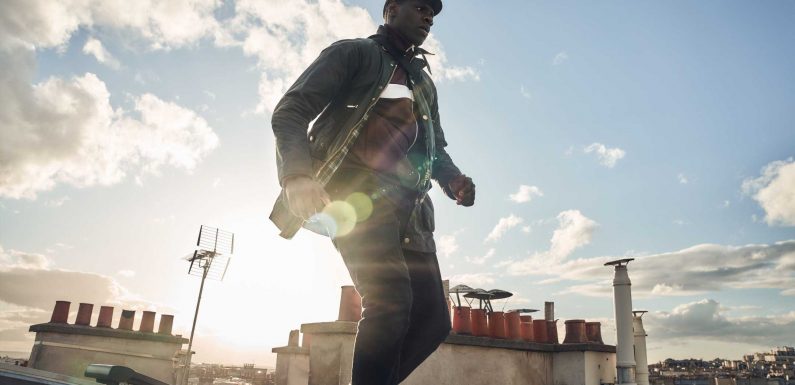
Paris is so much more than the Eiffel Tower—though many TV shows and films fail to look beyond postcard shots of the picturesque city. But Lupin, a French-made production which premiered earlier this year and was the first French series to make Netflix America’s top 10 list, shows another side of Paris. This time, it is a gritty European capital drenched in mystery and darkness.
Lupin follows Assane Diop (Omar Sy), a Senegalese Frenchman who is inspired by the character Arsène Lupin in The Gentleman Burglar by Maurice LeBlanc. The early-1900s story was the French answer to Sherlock Holmes, but the show is shot and set in modern-day Paris. As producer Isabelle DeGeorges explains in the Netflix featurette “The Making of Lupin”: “We felt that Omar shouldn’t play Arsène Lupin, but it should instead be a tribute to Arsène Lupin.”
The show’s production designer, Françoise Dupertuis, wanted to show the two different sides of Paris: the pretty tourist traps and the unpleasant outer-city suburbs. The series was shot in the high-end districts, like the chic first arrondissement (home to the Louvre), the left bank’s Jardin du Luxembourg, a manicured park, and the famed Pont des Arts bridge near Musee d’Orsay.
“We also wanted to show the harder Paris, that being where the working class live, the suburbs of the city,” Dupertuis tells AD. These scenes were shot in the city’s northern, less charming areas. “We worked on contrasts,” she says.
In fact, non-Parisians may not recognize the city in many of the scenes. “We wanted to shoot in more intriguing, more secret places in Paris, the Paris known to the Parisian who lives there, who works there and who still like to discover the city,” said Dupertuis. “The different faces of Paris.”
One lesser-known gem used as a filming location was the Marché aux Puces de St. Ouen, an antique market where Diop’s childhood friend Benjamin works in the show. Lupin also shot inside Parisian restaurants known as insider hot spots, like the Le China restaurant in Bastille, which feels like a Shanghai speakeasy from the 1930s; and Café Prunier, an upscale eatery first founded as an oyster shop in 1872.
Parisian landmarks peek out of corners and windows throughout the show, like in one restaurant scene where Diop and his ex-partner talk over lunch at a restaurant nearby La Porte Saint-Martin, a monument built in 1674. Some scenes were shot in the Musée Nissim de Camondo, a historic house showcasing 18th-century art, which is used in flashback scenes of the mansion where Diop’s father worked as a butler.
For the design team, the most beloved scene was shot at the Louvre for the first episode, where Diop stages a heist to steal the Queen’s multimillion-dollar necklace at an auction. “It’s always amazing to have a museum to yourself, to walk around and be alone in front of the Mona Lisa,” says Dupertuis. “It’s a magical place full of history; you feel so small when you work there.”
The TV show had permission to shoot inside and outside the Louvre over five nights. Getting access was difficult—it’s a long, bureaucratic process to gain permission to shoot anything in Paris, never mind its most famed museum. (Though this doesn’t stop countless productions from doing so—it was reported that the museum hosted a total of 120 productions in 2015 alone.)
According to Sy, though, the museum opened its doors to the crew and was “flexible and supportive.” TV shows that apply to shoot at the Louvre can only do so when it’s closed to the public, so Lupin shot between the hours of 7 p.m. and 8 a.m. to avoid crowds (it was filmed pre-pandemic).
Discover AD PRO
Though Paris is the star of the show, the last episode takes the viewer up the coast of the north of France. In episode five (spoiler alert!), when Diop escapes his perpetrators, the train and coastal scenes were shot in Étretat, a seaside town in Normandy. This is where the journey ends, for now. With only five episodes released initially, fans are waiting for an additional five to hit Netflix this spring. And while, of course, we can’t wait to see what happens after that cliffhanger, we’re also looking forward to seeing more of Paris through the eyes of its locals—not the Hollywood version.
It’s what Sy said in the making-of featurette, showing Paris in its entirety. “We didn’t want it to look like a postcard,” he said.
Lupin’s Portrayal of the Real Paris Is Positively Thrilling
Source: Read Full Article

















